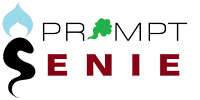Optimize your article using the SEO Optimizing tool for free
Are you tired of creating great content that just doesn't seem to get the attention it deserves? Do you want to increase your website's visibility and drive more traffic to your pages? Look no further, because we have the ultimate tool to help you unlock your content's full potential.
With the power of our free SEO optimization tool, your articles can reach new heights and attract a wider audience than ever before. Using this tool you'll not only see a surge in traffic, but you'll also be able to convert those visitors into loyal customers. Don't let your content go to waste any longer - Use SEO Optimizer to optimize your articles and take your website to the next level.
Why SEO is important for content
Before we get into the specifics of SEO optimization, let's first discuss why it's important for your content. SEO stands for search engine optimization, which refers to the practice of improving the quality and quantity of traffic to your website through organic search engine results. In simpler terms, SEO helps your content get found by people who are searching for topics related to your content.
By optimizing your articles for SEO, you increase your chances of appearing at the top of search engine results pages (SERPs) when someone searches for a relevant keyword.
This is important because most people don't click past the first page of search results. If your content isn't appearing on the first page, it's unlikely to be seen by many people. By improving your website's ranking on search engines, you'll be able to attract more traffic and increase your chances of converting that traffic into customers.
On-page optimization techniques
Now that we've established why SEO is important for your content, let's dive into the specifics of SEO optimization.
There are two main types of SEO: on-page optimization and off-page optimization. In this section, we'll focus on on-page optimization techniques.
On-page optimization refers to the practice of optimizing individual web pages to rank higher and earn more relevant traffic in search engines. Here are some on-page optimization techniques you can use to improve your website's ranking:
Title tags and meta descriptions
Header tags
Keyword research
Image optimization
Internal linking
Title tags and meta descriptions are HTML elements that provide information about your web page to search engines. The title tag is the headline that appears in search results, while the meta description is a brief summary of your content. By optimizing these elements with relevant keywords, you can improve your website's ranking on search engines.
Header tags (H1, H2, H3, etc.) are HTML tags that are used to structure the content of your web page. Search engines use header tags to understand the hierarchy of your content and determine what's most important. By using header tags strategically and incorporating relevant keywords, you can improve your website's ranking on search engines.
Keyword research involves identifying the keywords and phrases that people are searching for related to your content. By incorporating these keywords into your content, you can improve your website's ranking on search engines. However, it's important to use keywords strategically and avoid overstuffing your content with them.
Images can also be optimized for SEO by using descriptive file names and alt tags. This makes it easier for search engines to understand what your images are about and can improve your website's ranking.
Internal linking involves linking to other pages within your website. This not only helps users navigate your website more easily, but it also helps search engines understand the structure of your website and improves your website's ranking.
By implementing these on-page optimization techniques, you can improve your website's ranking on search engines and attract more traffic to your content.
Use SEO optimizing Tool below
Now that you understand the basics of SEO optimization, it's time to put your knowledge into practice. Below is an SEO-optimizing tool that can help you analyze your content and identify areas for improvement.
Simply enter the blog post and the tool will optimize the article along with headings. Pay attention to the on-page optimization suggestions, and make the necessary changes to improve your website's ranking on search engines.
Limitations of Tool
It may often produce irrelevant responses. If it does so please resubmit the blog post.
Conclusion
SEO optimization is a powerful tool that can help you unlock the full potential of your content. By improving your website's ranking on search engines, you can attract more traffic to your content and increase your chances of converting that traffic into customers. However, it's important to remember that SEO is not a magic solution. The quality of your content still matters.
By implementing on-page optimization techniques, conducting keyword research, and using tools like the SEO optimizing tool, you can improve your website's ranking on search engines and take your website to the next level. So what are you waiting for? Start optimizing your content today!


